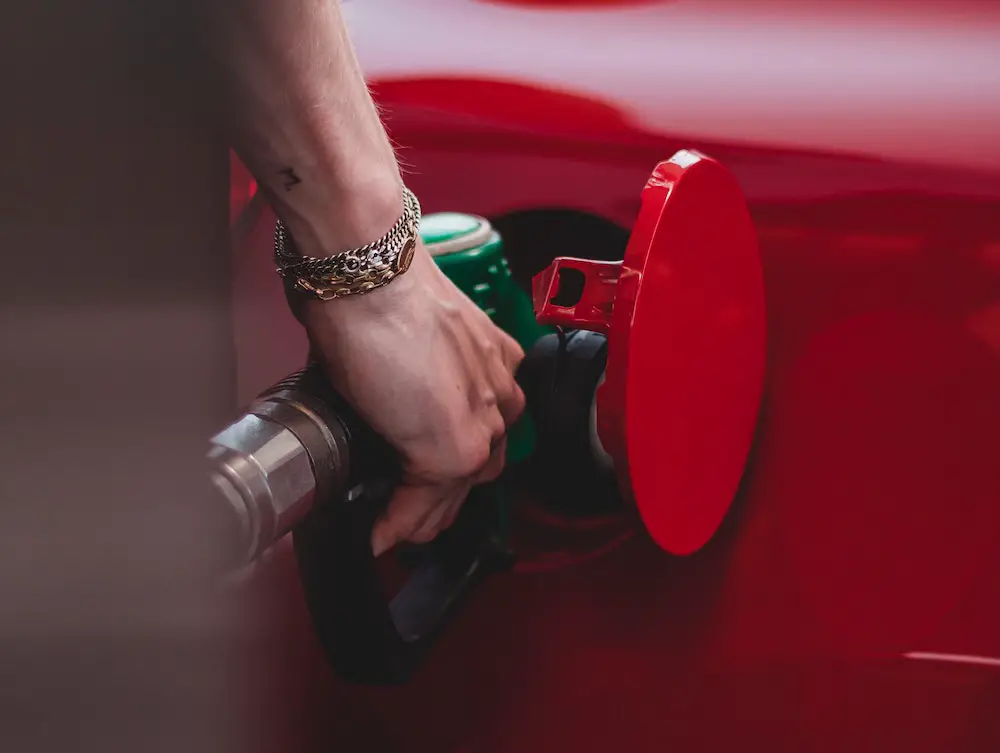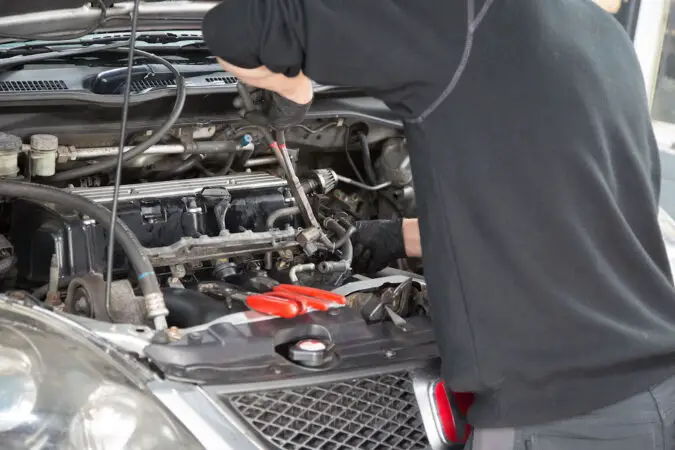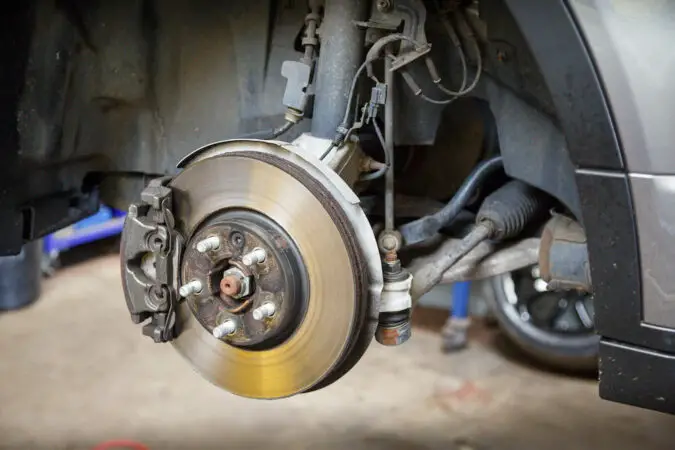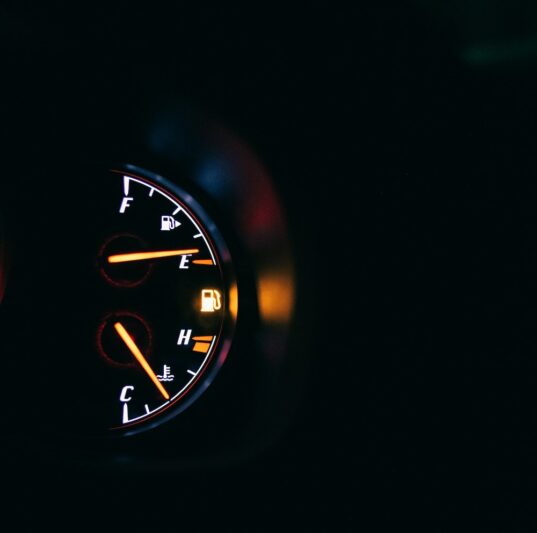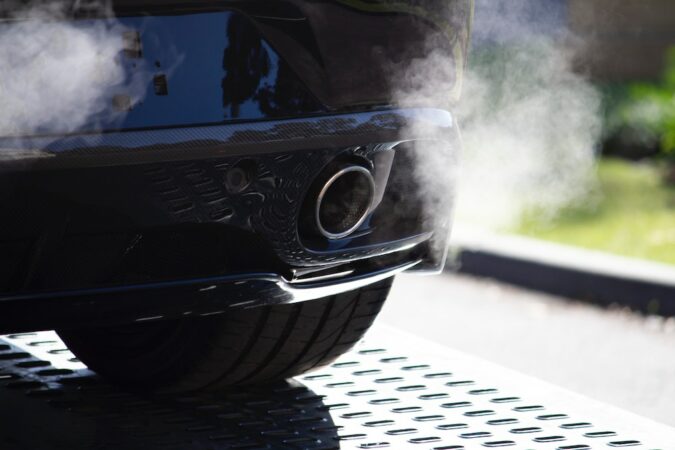Air and fuel are the primary components of almost all combustion processes in our nature. Automotive engines in no way break this rule. In fact, it is the very principle it banks its entire operation on. The best air fuel ratio is essential for achieving perfect combustion. Let us learn how this one parameter affects the performance and efficiency of your engine.
Just like every mixture in our universe, the best air fuel ratio is achieved when the right amount of fuel is mixed with the right proportion of fuel. But what determines these proportions? Does the best air fuel ratio always remain the same for an engine? Not really.
The idea behind the best air fuel ratio is the air fuel ratio that is perfect for a given condition. This can change from one situation like when the vehicle is being started up to other situations like running under a heavy load. Each of these instances demands a certain air fuel ratio which is the best air fuel ratio for that moment.
In this story, we will try to learn in detail about the air fuel ratio and try to determine what the best air fuel ratio is. We will also consider different instances in a driving cycle and try to detail what the best air fuel ratio for them is, and detail why.
But before we proceed to the meat of this discussion, let us prepare ourselves. We must understand what the air fuel ratio is and how a change in that affects the engine’s behavior.
- What Is Air Fuel Ratio?
- How Does It Affect The Engine Performance?
- Best Air Fuel Ratio For Different Situations
- Symptoms Of Improper Air Fuel Ratio
- What Causes Improper Fuel Ratio?
What Is Air Fuel Ratio?
This is one question that we have to answer before we nose dive into determining the best air fuel ratio for an engine. As its name gives away, the air fuel ratio is the mass ratio between the amount of air pumped into an engine and injected amount of fuel. The mixing of these elements happens inside the combustion chamber or just before the intake valve, depending on which engine we consider.
In conventional Multi-Point Fuel Injection (MPFI) gasoline engines, the fuel is usually injected outside the combustion chamber. This happens just before the intake valve. Here the fuel mixes with the ambient air coming through the intake manifold to produce an air-fuel mixture. The ratio of this mix is determined by the load on the engine and a few other factors.
In diesel or Gasoline Direct Injection (GDI) engines, the injection of fuel happens inside the cylinder, in the combustion chamber. The mixing with air happens here. The ratio is important here as well, and it affects the engine performance just like the MPFI engines.
No matter which engine you pick, a change in the air fuel ratio can affect the engine performance. To understand how an air-fuel ratio changes, we will look at two extremes of this ratio. This will provide us with an insight into the calculation of the best air fuel ratio.
Best Air Fuel Ratio: How Does It Affect Engine Performance?
When we discuss this, we need to know how an air fuel mixture can sway to its extremes. This is where rich and lean mixtures pop into the picture. Here, we will understand what they mean and how they affect the engine performance.
Rich Air Fuel Mixture
Rich air fuel mixture is rich in fuel. This is the simplest explanation. There is a longer, and more complex explanation for this. Any air fuel mixture with less air and more fuel than the stoichiometric ratio is called a rich mixture. But what is a stoichiometric ratio?
The stoichiometric ratio is the ideal air-fuel ratio for a given fuel. This depends on the chemical makeup of the fuel considered. This ratio is calculated by considering the number of carbon and hydrogen bonds in the molecules of this fuel.
The stronger these bonds are, it takes more oxygen to break them. So, the stoichiometric ratio varies from fuel to fuel, based on what they are, chemically. For gasoline, it is 14.7: 1. This means that 14.7 parts of air are required for every part of the fuel to achieve an ideal ratio.
Back to our rich mixture. Running an engine with a rich air fuel mixture can help produce a lot of power due to the increased amount of fuel. But this can bring down fuel efficiency as there is not enough air to perform perfect combustion. Due to this incomplete combustion, the emissions are also going to be worse.
Lean Mixture
On the other end of the spectrum, we have a lean mixture. If the rich mixture had a high concentration of fuel, the leaner mixture will have more concentration of air. Applying the same logic here, any mixture with more air than the stoichiometric ratio is a lean mixture. How does an engine respond to a leaner mixture then?
If the rich mixture was good for performance, it will be right to apply the inverse to the leaner mixture. If the air-fuel mixture is lean, the engine will produce less power, hence lesser performance. On the same lines, the rich mixture produces more emissions and reduces fuel efficiency, but the lean mixture does the opposite.
Running a lean mixture makes combustion easier as there is a lot more air. The fuel can be completely burned, eking the maximum energy out of it, hence increasing efficiency. The complete combustion also leaves less harmful after-products, hence lower emissions.
When we discuss the best air fuel ratio, it is never a constant ratio. The best air fuel ratio always swings from rich to lean and vice versa depending on the requirement of the engine. When the engine needs more power, a rich mixture is preferred. But while it is coasting on a highway, a lean mixture makes more sense, as it can help reduce emissions and improve efficiency.
The Best Air Fuel Ratio For Different Situations
As we already concluded, there is no specific best air fuel ratio for a gas engine. It is always varying greatly from one situation to another. A machine like a car that is put through many environments that contrast from one another needs varying air fuel ratios to perform at its best, every time.
In this list, we will look at some of these common conditions. Analyzing the best air fuel ratio for them will be a piece of cake then. With no further ado, let us jump right in.
1. Starting Up The Car
On a cold morning, when you start up your car for the first time, every piece of metal in its engine must be stone cold. To heat these, the vehicle needs a lot of calories. To achieve this demand for calories, it needs more fuel. Unsurprisingly, the best air fuel ratio for this situation banks heavily on the rich side.
The fuel concentration in the air fuel mixture is higher than usual. The ratio can go as much as 9:1, making it very rich. This is important as the engine needs a lot more fuel to heat everything to its optimum temperatures. If not, the engine will find it difficult to produce the right power and control emissions.
A parallel can be drawn to this process from the past. If you have driven or ridden a carburetor-equipped vehicle in the past, you may remember a device called the choke. This was used during cold starts to reduce the amount of air, manually making the mixture richer. In modern vehicles equipped with fuel injection, the electronics sort this out for you, choosing the best air fuel ratio for the situation.
2. Idling/Warming Up
Of course, your vehicle needs to warm up before you can drive away. This situation too demands some extra fuel but not as much as starting up the vehicle. To heat it up, the vehicle uses a comparatively richer mixture but not as rich as what it chose to start with.
The best air fuel ratio for this situation usually hovers near 12:1. The lower volume of air does help the vehicle produce enough power to heat up the components. But it is not too rich in fuel that it wastes too much fuel than needed and produces more emissions than tolerable.
3. Accelerating
None of us will need a clarification that the vehicle needs more fuel while accelerating. Pushing the pedal to the metal is always a sure-shot way to murder your fuel efficiency due to this very reason. The more you play with the throttle, the more your vehicle will eat through the fuel.
It is not just the amount of fuel that is high in these instances, the concentration goes higher too. The best air fuel ratio while accelerating has to bank towards the richer side of the stoichiometric ratio. This is quite obvious as the engine will benefit from the additional power it can make with a richer mixture.
Being fed with this rich air fuel combination, internal combustion engines can churn out immense power for quick acceleration. But this comes at a cost. While accelerating, the power may get a boost but the fuel efficiency takes a serious hit, as we explained before. The tailpipe emissions also go higher.
The best air fuel ratio for these situations can be very rich, sitting around 11:1. This is the case under heavy acceleration, pedal to the metal scenario. For lighter acceleration, the condition can get a little leaner but not by much.
For facile accelerations, the best air fuel ratio can be leaner, up to 13.1:1. Note that it is not a lean mixture. It is still rich but not as rich as what is being fed in under hard acceleration.
4. Hauling Heavy Loads
Trucks and SUVs these days are increasingly being used for hauling or towing stuff. These can be caravans, fifth wheels, or other recreational equipment like boats, ATVs, dirt bikes, etc. In some states, even triple towing is done with these vehicles. Situations like this demand additional power from the engine, even while not accelerating hard.
The vehicle recognizes the excess demand for power and delivers by altering the best air fuel ratio for this situation. The air fuel ratio moves to the richer side to help the engine produce more power. The richness of the mixture is comparable to what we have seen when the vehicle is accelerating hard. It sits near 12:1 depending on how heavy the load is.
5. Highway Cruises
This is where the car does not need the additional punch of a very rich air fuel mixture. In these situations, an ideal ratio produces the best air fuel mixture. At highway speeds, the engine is looking to balance power with fuel efficiency and emissions.
The push it needs from the fuel must be good enough to sustain its momentum but does not have to push the car further. Also, highway runs are long drives where fuel efficiency and emission levels are paramount. So, the best air fuel ratio for this situation is calculated with all these requirements in mind.
To achieve this intricate balance, the best air fuel ratio for a highway run is close to the stoichiometric ratio. It uses an air fuel ratio of 14.7:1, providing the perfect middle ground for highway operations.
6. Decelerating
With this, we come to the phase of driving in which the engine is at its least loaded state. While decelerating, the engine does not have to produce any power. The only task it needs to carry out is to just keep running. As we can easily guess, to achieve this, the engine does not need a lot of fuel. Hence, the best air fuel ratio for this situation can be pretty lean.
How lean? The best air fuel ratio for a deceleration scenario can drop down to 17:1 as it needs very less fuel. The additional air in the mixture can also help clear the exhaust gases faster. Of all the situations we looked at, this is where the vehicle can save some fuel.
That is why we are all advised to let go of the throttle long before an anticipated stop to let the vehicle use its engine braking to come to a halt. The brakes can be applied at the last moment. If you have a stick, this process becomes even easier as you can downshift and reduce speed as required.
Symptoms Of Not Having The Best Air Fuel Ratio
We have already learned that the best air fuel ratio for an engine heavily depends on the situation. For each situation, it is decided with the best performance in mind, in terms of power, fuel efficiency, and emissions. But what happens if this best air fuel ratio is not achieved? How does the engine respond?
Just like all other malfunctions, the engine running on the wrong air fuel ratio for a situation displays many symptoms. These are the primary indications to the driver that the engine is being fed with the wrong fuel air concentration. They also give the drivers a chance to correct this as early as possible.
What are these symptoms? These symptoms can range from poor acceleration to a backfire. But this depends on what kind of deficiency the vehicle’s fuel has at that point. If a leaner mixture is pumped in when the vehicle needs a richer mixture you may get a set of symptoms. These may be completely different from what it can show when it sips on a richer mixture at a time that demands a leaner mixture.
Without any further ado, let us look at each of these symptoms in detail. This should prepare us to know if your vehicle is running on the wrong air fuel mixture.
Symptoms When Air-Fuel Mixture Is Too Rich
In this case, the vehicle gets too much fuel, more than what it needs to carry out its operation. The symptoms that the engine exhibits at this stage stem from this excess fuel. Though there is no immediate damage made to the engine, it is always better to keep an eye on these symptoms for the long life of your vehicle.
Let us look at a few of these symptoms that a vehicle incorrectly fed with a rich mixture shows.
1. High Fuel Consumptions
Knowing that this is a symptom of running rich is no rocket science. When an engine is fed with a richer mixture, it sips on additional fuel that is usually not consumed at that time. Hence you can see a massive drop in fuel efficiency.
2. Black Smoke From Exhaust
Too much fuel going into the engine can also increase tailpipe emissions. Yet another no-brainer. In this case, there will be too much fuel for the available air to completely combust with. This incomplete combustion can produce a lot of smoke, which comes right out of your tailpipe.
3. Strong Smell
The unburned fuel in the engine can not only produce smoke but also smell. The fuel can reek its odor as it is burned. The driver may be able to detect it if the engine is running too rich. Hence, the smell of unburned fuel is yet another symptom you should watch out for.
4. Backfiring
The backfiring is a symptom that some gearheads actually enjoy. And truth be told, sometimes it can be quite a spectacle. But that apart, backfiring is never a pretty thing for your engine. This is caused by the unburned fuel combusting inside the exhaust system. You can hear this as some pops and bangs, and sometimes, even fire coming out of the tail pipe.
Symptoms When Air-Fuel Mixture Is Too Lean
This is where the engine yearns for more fuel. The leaner mixture pumps a lot more air than what is needed, taking the power of fuel away from the engine. Let us look at a list of symptoms you may encounter if your vehicle is running lean.
1. Poor Acceleration
No surprise here as well. Lower the amount of fuel in the mixture, the lesser the power produced by the engine. With very less fuel to play with, you cannot expect much grunt from the mill when you floor the pedal. So, if you feel that your car’s acceleration is not what it used to be, it may be running too lean.
2. Rough Idling
As the name says, rough idle is a situation in which your vehicle idles but with very high vibrations and noise. It never sits smoothly at the rpm that it always sits when idling. One of the reasons that can cause this is running too lean.
What Causes Wrong Air Fuel Ratio?
If a vehicle is programmed to run the best air fuel ratio at all times, what shakes it up? What causes the vehicle to lose this control and run richer or leaner than what is required?
There are several reasons for this happening. Let us look at these to understand what causes an engine to run on the wrong fuel mixture
- A clogged air filter can reduce the amount of air flowing into the engine, causing it to run rich
- A bad air-fuel ratio sensor can produce wrong readings and alter the ratio.
- A bad fuel injector may end up pumping more or less fuel than what is required.
- A defective oxygen sensor can also dish out wrong readings, altering the ratio.
- Defects in other sensors like the MAF sensor, camshaft position sensor, etc can also affect the air fuel ratio
- Finally, any problem with the Engine Control Module (ECM) can completely take the calculations for a ride, effectively altering the ratio.
Engine Tuning Facts: Air-Fuel Ratio
- The air-fuel ratio of an engine is critical to its power, fuel efficiency, and longevity.
- Stock engines are equipped with appropriately sized and tuned carburetors or fuel injection systems, so you don’t have to worry too much about air-fuel ratios.
- If you modify your engine with aftermarket parts, such as an aftermarket carburetor, you need to adjust the air-fuel ratio accordingly.
- Changing engine efficiency affects its ability to burn fuel and air and provide horsepower and torque.
- Spark plug reading is not an exact science, so it’s best to use electronic products to determine air-fuel ratios accurately.
- All fuels are assigned a stoichiometric air-to-fuel ratio, with 14.7:1 being the perfect value for pure gasoline.
- Gasoline additives vary the ideal air-fuel ratio necessary for optimum performance.
- Mopar V-8 engines typically respond to an air-fuel ratio of 12.5:1 to 13.2:1 for optimum performance.
- Some brands offer several products, such as portable handheld meters, data-loggers, and permanently mounted gauges, to determine and even record air-fuel ratios.
- By installing an oxygen sensor in the exhaust, you can plug into electronic scanners and read the air-fuel ratio in real-time, allowing for better engine tuning.
Conclusion
The best air fuel mixture has no fixed value. It is always dependent on what conditions you are driving your vehicle in, as well as the load on the engine. But despite its dynamic nature, the best air fuel ratio is essential for an engine to work at its optimum capacity. The maintenance procedures that ensure this are equally important.
In short, running on the wrong ratio, lean or rich, does not immediately destroy your engine. But over time, this can have a detrimental effect on your engine’s health. Better be safe than sorry.

